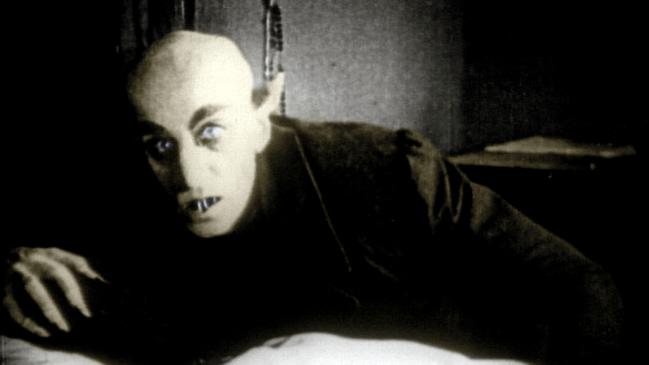A century of Nosferatu
A new exhibition explores the making of the first great vampire movie.

Nosferatu: A Symphony of Horror, a silent movie adaptation of Bram Stoker’s Dracula that premiered in Germany in 1922, was cinema’s first great vampire story.
The film’s success helped to establish the career of director FW Murnau, who later went to Hollywood and made the silent classic Sunrise, one of the first Oscar winners.
But Nosferatu also bears the mark of Albin Grau, a commercial artist with an interest in the occult, who produced the film and designed its sets and costumes.
In celebration of the centenary, the exhibition Phantoms of the Night: 100 Years of Nosferatu has opened at the Berlin State Museums’ Scharf-Gerstenberg Collection. Examining the film’s manifold connections to the visual arts, the show presents some 180 artworks and other items related to Nosferatu and its creators.
While Grau’s contribution to the film has long been acknowledged, Phantoms of the Night brings his curious and brief film career to centre stage. Scholars believe that Grau (1884-1971) is responsible for the distinctive, terrifying look of Count Orlok, the film’s “nosferatu”, a word for vampire used in Stoker’s novel. Played by Max Schreck – whose name, as it happens, means “fright” in German – Orlok is a demonic figure who slinks in the shadows and travels with a retinue of plague-bearing rats. He has none of the appeal of later screen vampires, from Bela Lugosi’s suave Count Dracula to the glamorous kids of the Twilight series.
Grau was also responsible for the movie’s remarkable ad campaign, and the exhibition begins with his colourful, nightmarish drafts for posters, some of which depict Orlok as a kind of giant werewolf hovering over a gabled townscape. More money was spent on ads for Nosferatu than on making the movie itself, says Kyllikki Zacharias, head of the Scharf-Gerstenberg Collection and part of the show’s curatorial team.
Zacharias managed to find non-cinematic work by Grau in a Swiss archive, including photographs documenting a bizarre all-white display that he devised for a Berlin department store in the early 1920s, as well as a jaunty 1918 self-portrait. A few years after Nosferatu, Grau gave up his cinematic career and devoted himself to the occult.
The Scharf-Gerstenberg Collection is known for its holdings of Surrealist art, and it is suitable as the venue for the show, argues Zacharias, because Nosferatu exerted an influence on the Surrealists. But arguably a key source of the film’s power is its realism.
For his exteriors, Murnau avoided artificial-looking Expressionist sets, like other German horror films of the time. Instead, he filmed on location in Slovakia’s Carpathian Mountains and Germany’s Baltic coast.
Murnau’s original inspiration for these real-life locations typically came from artworks, says Zacharias, and the show reveals the film’s debt to the fine arts. For instance, Caspar David Friedrich’s 1822 landscape The Lonely Tree is displayed alongside a related film loop from Nosferatu, which seems to incorporate the Friedrich image in a sequence that sets an idyllic mood. Francisco de Goya’s 1799 etching Tantalus, showing a female figure who seems to have lost control of her body, is echoed in Nosferatu when Hutter, the hero played by Gustav von Wangenheim, is apparently bitten by Orlok and wakes up the next day in a state of prone contortion that the catalogue refers to as “the Goya pose”.
Alfred Kubin, an Austrian symbolist printmaker and illustrator, also influenced Grau and the show includes a number of his gruesome supernatural images from the years before World War I.
In the ink wash drawing The Sucker (circa 1903), a vampire-like elephant has attached the tip of its trunk to a redhead’s decolletage for the amusement of a shrouded skeleton.
After its initial success, Nosferatu had a strange afterlife. The film was an unauthorised adaptation of Bram Stoker’s novel, and in 1925 Stoker’s widow won a lawsuit for copyright infringement. The German court ordered that all prints of the film be destroyed. Versions of Nosferatu managed to survive outside Germany, says Christoph Michel, a programmer at the Munich Film Museum. Germans could only view these “cut and changed” foreign prints until the early 1980s, when Enno Patalas, head of the Munich Film Museum, reconstructed a new print that harkened back to the original.
Phantoms of the Night will host three daily screenings of the film, using a 21st-century digital restoration by Spanish director and historian Luciano Berriatua, along with a new soundtrack. But no version can exactly replicate what the audiences saw at the Berlin premiere, says Michel.
The Wall Street Journal


